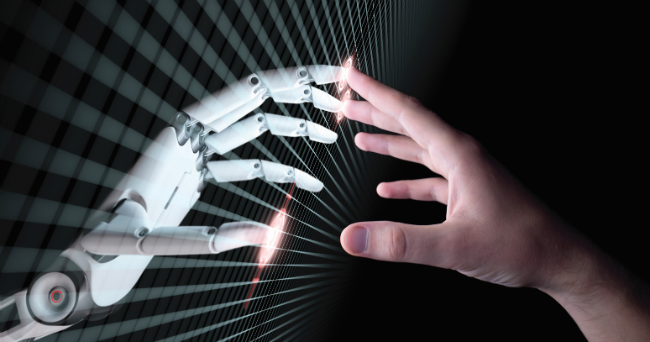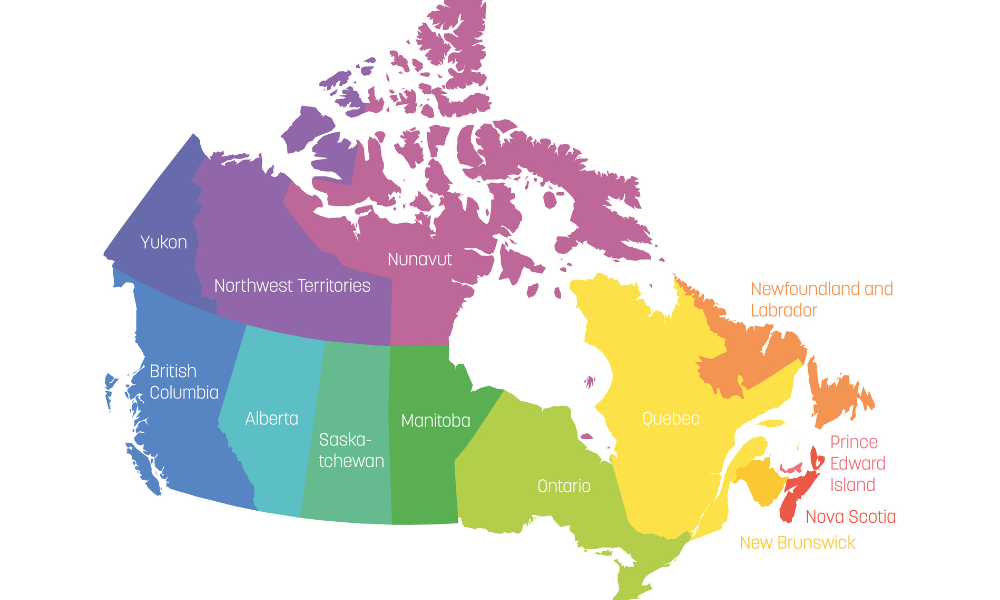Technological capabilities will change profession for the better, say experts

It’s official: Robots and artificial intelligence (AI) have infiltrated the ranks of human resources and will be mainstream within the function in five years.
That’s the finding of a report by Ontario’s Human Resources Professionals Association (HRPA), which concludes AI can help HR professionals reduce their administrative burden, recruit, reduce bias and improve employee engagement.
“The future is here and employers have good reasons to embrace AI’s increasing role in HR functions,” said Scott Allinson, vice-president of public affairs at HRPA in Toronto. “Utilizing AI is not about worker displacement, but a useful tool paired with human judgment to allow HR professionals to focus on strategic planning.”
Fourteen per cent of Ontario HR practitioners are already using AI in their workplaces, while 48 per cent expect the technology to be integrated into their department within the next five years, found a 500-member survey conducted for the study, A New Age of Opportunities: What Does Artificial Intelligence Mean for HR Professionals?
HR is one of the few professions that will see minimum job displacement, said Allinson.
“It’s going to be at a minimum level because you still need that human intervention on the HR side,” he said.
“The good news on the HR side of it — from the data we’ve seen — (is) they’re in the low-disruption area.”
The state of AI
AI’s beginnings stem from search algorithms and pattern recognition of the 1990s, according to Ziad Kobti, director and professor at the School of Computer Science at the University of Windsor in Ontario.
Major investments in AI over the last two years have accelerated its development to the point where cognitive computing and natural language processing applications are second nature, he said.
“Virtual assistants or chatbots are really the outcome of cognitive computing, and natural language processing is underneath the hood,” said Kobti. “The applications are endless.”
Used properly, AI complements the skills of HR practitioners and the overall quality of employment services through avenues such as training recommendations or recruitment streamlining, he said.
While HR has been a late adopter in this area, some large multinational organizations are already reaping the rewards of using AI within the HR function, said Allinson.
“We’re in the early stages of this, but the fact that we are seeing — especially in the high-tech sector — a willingness, I think it looks promising going forward,” he said. “We’re probably five to 10 years away from this becoming the norm. I think we’re about 10 years away from seeing a significant jump in adoption, and what I mean by that is it’s still around the 50 per cent mark, because you’re going to have those companies that are too small to implement this kind of stuff anyway.”
Financial barriers are one of the major restrictions keeping HR from implementing AI as a wider tool, said Allinson.
At issue with AI’s rapid development is the resulting “pacing problem” in terms of a lack of public policy and appropriate government oversight, said Kobti.
“There’s the danger of that lack of policies,” he said. “You basically have to police yourself. There should be some sort of standards or policies, but not to limit the creative process and what else we can do with AI and data collections.”
“Let’s not prevent innovation, but rather foster ethical standards and guidelines. That’s something we lack.”
Government oversight should come when products such as HR systems reach the commercial stage, in an effort to provide oversight on what features can be used and how it should be controlled prior to it being made public, said Kobti.
Legislation needs to keep pace to protect both employers and employees — especially during the early adoption period, said Allinson.
“Government’s got to keep an eye on this and make sure that legislation and laws keep up to date to make sure that we do have the privacy part of it protected.”
Future of work
What’s complex right now is nobody knows exactly what the future will hold, said Manon Poirier, general manager of the Ordre des conseillers en ressources humaines agréés (CRHA) in Montreal.
AI is associated with both job loss and added value, and will be implemented quicker than experts think, she said.
“We need, as a profession, to understand how it’s going to impact the whole of the organization, and actually be the one telling other functions — finance, marketing, whatever — that this is what’s coming up; these kinds of tasks will be automated,” said Poirier.
“We need to prepare our staff in order to be ready, grow their skills, understand that people are not going to communicate in the same way. So HR needs to go beyond their function.”
In order for HR professionals to successfully lead the transition, “sufficient technology literacy” is a necessity, said Poirier.
“We so much strongly believe that we as a profession need to make that change or transformation, that we’re saying to our members and to HR: ‘HR will be about AI and it will be about technology, and our professionals need to be able to help organizations facilitate those innovation processes, over and above everything else we do,’” she said. “We need to make that change now.”
It’s not that AI is going to replace the HR function, said Allinson. “There is a perfect match of HR professionals and AI working together.”
“AI will allow HR professionals to start focusing more on the strategic side of the organization, reducing their administrative burdens,” he said. “You should not be afraid of this. Don’t let the tool overrun you; the tool is there to help you do your job better.”
Cost-benefit analyses should also be conducted to gauge the viability of implementing AI applications for HR support in every organization, said Allison.
The technology is expected to grow in use as it becomes more reliable and affordable, he said.
Laying the foundation
The opportunity is there for HR to take the lead on this issue, said Daneal Charney, director of talent at MaRS Venture Services in Toronto.
“HR practitioners need to be in the driver’s seat,” she said. “They need to understand that this is a co-worker for them, that it’s going to help them perform better. They need to fundamentally shift their thinking to ‘How is this going to help me and my workforce perform better? What are the outcomes and what are we trying to achieve as an organization, and how can this help us do that?’”
“We’ve just scratched the surface in terms of what AI could do for our workplaces,” said Charney. “We can really think more broadly about the whole employee life cycle and experience… There’s an amazing opportunity to co-design how this technology can help bring a better experience for the employee.”
“Organizations have to integrate learning deeply into our processes so we’re continually reskilling all the time.”
HR’s role in representing empathy and upholding organizational values and culture is needed to help understand the outcome AI will have in the world of work, she said.
“They’re an incredibly important stakeholder in defining how we use AI in organizations and what we want the outcomes to be,” said Charney. “We need to be at the table.”
But HR departments should collectively conduct a needs and risk assessment before committing to an AI system, said Kobti.
“There’s the potential there for risk,” he said. “Just like it can help people, it can also be a risk if they don’t know what the features are.”
Employers must also be diligent in terms of data collection and storage, and transparent about its usage, said Allinson.
“The sooner companies have policies in place to both utilize employee data to keep them satisfied, while maintaining oversight and personal policy, the better it will be to ensure the use of AI is being maximized to strengthen the HR profession,” he said.




